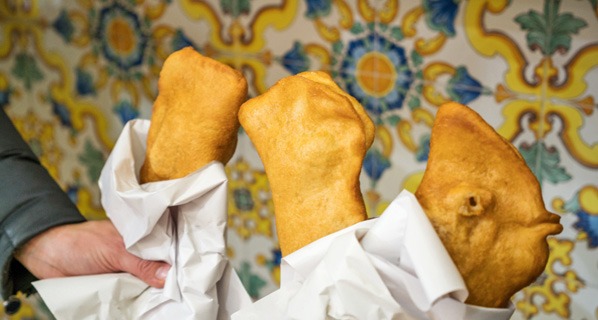All Blogs, Food, Pizza Ovens
Our Guide to Italy’s Regional Pizzas
Many people know that pizza originated in Italy. So, it shouldn’t be surprising that Italians have spent hundreds of years perfecting it and imprinting their own flavours, styles, toppings, sauces or cheeses upon it. What you might not know is how divisive pizza is in Italy. If you’re looking to become a true Italian pizza aficionado, read on to discover the regional differences of how pizza is made in Italy.
Rome
Rome is home to a variety of Italian pizza styles but arguably most famously, is the Al Taglio (or by the cut). Al Taglio is the evolution of the original first pizza originating from the height of the Roman Empire. As such, it is famous in other regions (notably Sardinia) but each of the other regions have their variations. Another key characteristic behind its name is that the pizza is traditionally baked in sheet pans and sold by the slice. Paying for how much and the weight of the slice you choose. Al Taglio in Rome, features a crisp one inch thick crust. Some toppings and features are added during or at the end of the bake such as prized cheeses, seafood and cured meats. Salt, oil and rosemary are also popular accompaniments in the region.

In other areas, Al Taglio is referred to as Pizza Romana Tonda. Which is circular, with a very thin crust. The Romana Tonda originates from Christopher Columbus. After convincing the world that the world is round and not flat, loyalists to the Romana Tonda maintained it was round and flat which lends their view to the appearance of the pizza. The pizza itself is extremely thin with a crisp crust.
Rome is also home to the Pizza alla Pala or a Metro. Similar to the Al Taglio, it is baked on the base of a stone pizza oven and cut into square slices. The ingredients are almost identical, shape and texture may vary, but the main distinction is the crispness of the at least half an inch thick pizza.
Naples
The Neapolitan takes its name from the region of Naples where many great flavours have emerged. Traditionally speaking, the softness of the pizza crust owes in part to being cooked in a 450C wood fired oven. Because of the heat, the air bubbles in the dough swell, char and blister before the base of the crust has hardened. The crust is smaller and thinner. The elasticity of the dough allows it to just hold the tomatoes and mozzarella. This allows the flavours to flow in synergy so you experience all the flavour of the ingredients in one bite.

Naples is also home to the Calzone. Folding an Italian pizza over in itself is nothing new or different than in some regions, but the main distinction is that you do not build up the cornicione in the centre as you would other pizzas. The sauce and cheese are spread over before adding toppings to one half and folding over.
Sicily
Whilst you might immediately recognise Sicily for the origins of the ‘Sicilian’ which in the UK and USA can be served as square shapes, you would not find the same in Sicily itself. Where the original shape of the Sicilian (arguably inspired by sfincione of Palermo or cudduruni of Syracuse due to the bread-like makeup of the recipe) is square, in Sicily you could expect essentially two round pies. These consist of toppings of goat cheese, and local cow’s milk cheeses such as Pecorino Siciliano, anchovies and a heavy dusting of breadcrumbs.
Milan
Also treasured by the people of Naples, Milan is home to the Pizza Fritta. Made With the toppings in the Neapolitan style, then folded inwards to create either a circular or half moon pouch of stuffed dough. It is then dropped into a deep fryer. Emerging in a golden batter, the toppings are hidden inside the dough ball meaning the ricotta, tomato and salami are untouched by the oil.

Liguria
Commonly found in Northern Italy is the Ligurian style pizza. The tomato sauce base is commonly replaced with pesto and the base itself is made in a focaccia style which has a light, but slightly chewy texture which lends beautifully to a greater variety of pizza toppings.
Sardinia
Sardinia also shares many other styles but one unique to Southern Italy is known as either the classica, tradizionale or Napoletana. At roughly a 12 inch circle shape, it features a thinner crust and less toppings. Traditional toppings are typically used, so more margaritas than any meat or otherwise ‘adventurous’ toppings.
Turin
Gourmet is a style beloved in Turin. They are often cut into little triangles which are often disregarded by other regions which consider this to be snobby and too far along the lines of a Michelin chef. A key distinction is the focus on whole grain flours, ancient grains and sourdough, with fancier toppings. This style is also popular in Verona.

Which was your favourite Italian pizza? Whilst we may not be able to help you argue the finer points of pizza with different localities in Italy, we certainly can provide you with the assistance you need when it comes to choosing the right pizza oven for you.
Contact our team today on 01423 608648, visit in store or online here.



Pingback: Easy Pizza Fritta Recipe: Crisp, Savory Fried Pizza Bites